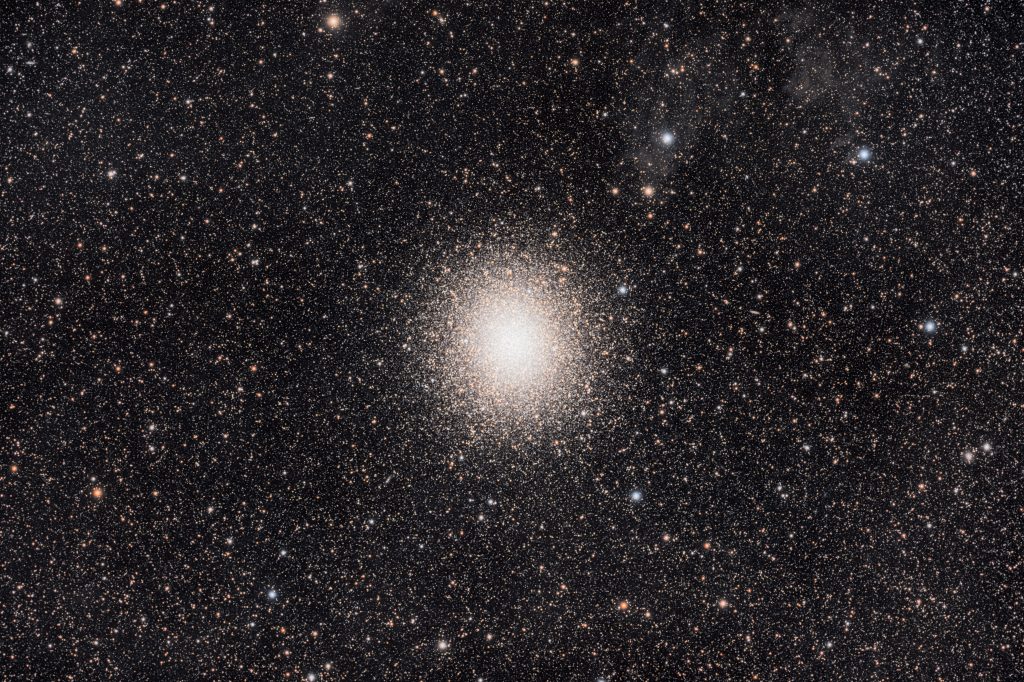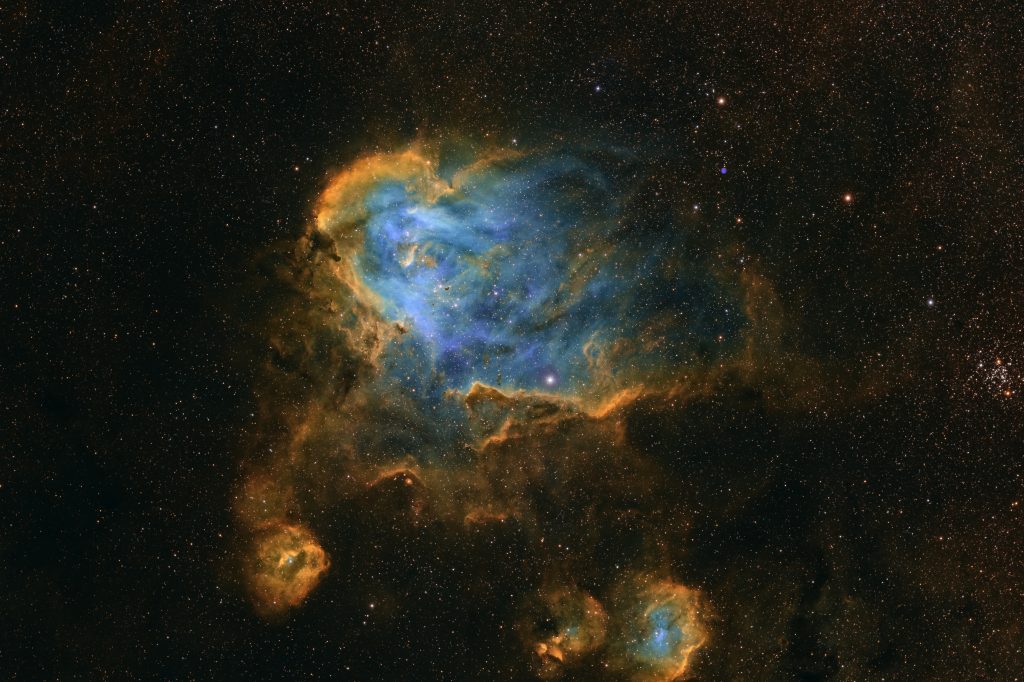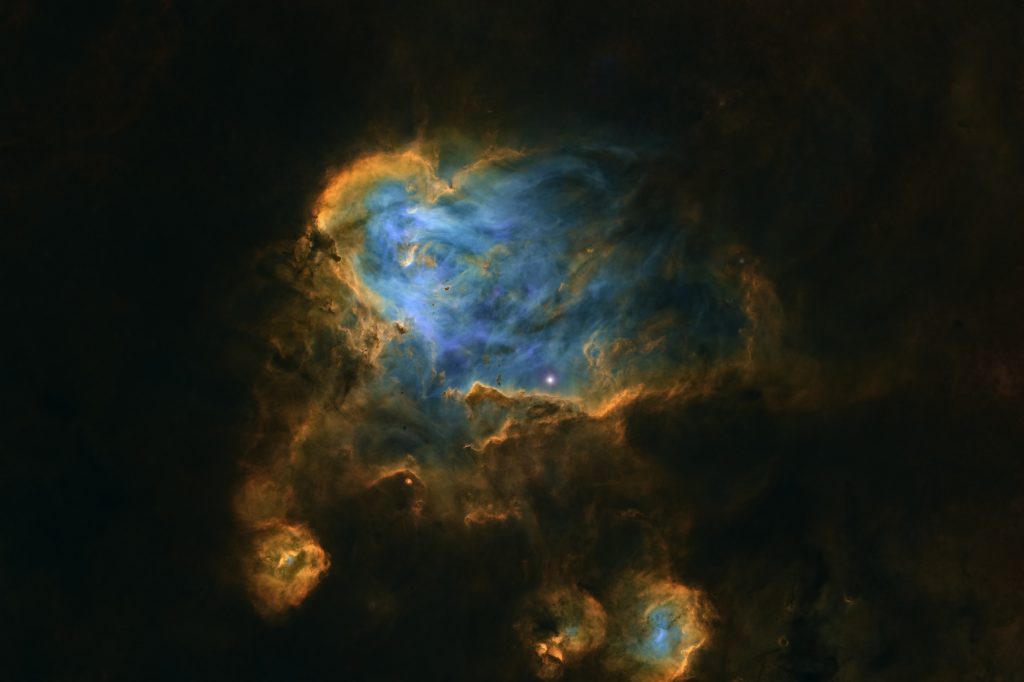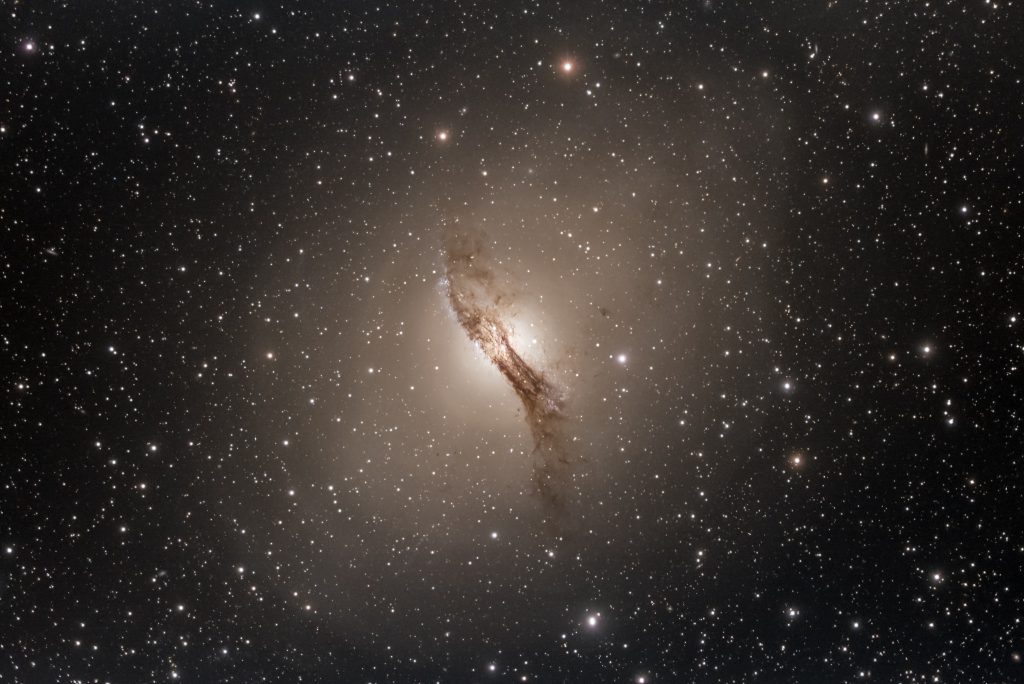In the vast expanse of the Centaurus constellation, a celestial wonder awaits the gaze of astronomers and stargazers alike. NGC 5367, a mesmerizing reflection nebula, beckons us with its ethereal beauty and enigmatic allure. At the heart of NGC 5367 lies a stellar nursery, where new stars come to life. The nebula’s blue hues reflect the presence of young, hot stars, illuminating the surrounding gas and dust. NGC 5367, a reflection nebula in Centaurus, invites us to witness the cosmic artistry of light and dust. As we gaze upon this celestial wonder, we are reminded of the vastness and splendor of the universe, fueling our sense of wonder and exploration.
I had to dedicate a lot of imaging time to this deep-space object. Specifically, my camera was collecting 11 hours and 30 minutes, because all reflection nebulae need a lot of time to reveal all the details.
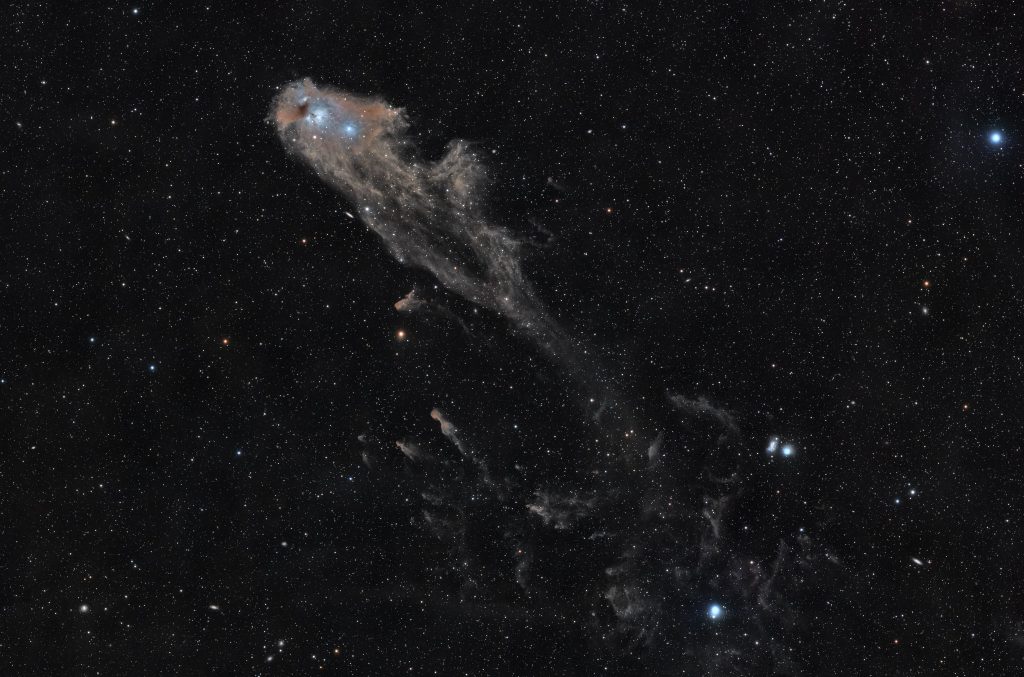
Technical details:
| Telescope | Sharpstar 94EDPH |
| Aperture | 94 mm |
| Focal length | 414 mm |
| Mount | Rainbow Astro RST 135 |
| Autoguiding | ZWO 178MM, QHY Mini Guide Scope |
| Camera | ZWO 2600MM @-10°C |
| Corrector | F4.4 Quad Reducer |
| Filters | Antlia V-Pro LRGB |
| Exposure | 138x300s, Gain 100, bin 1×1, |
| Date | 2023-05-18 |

